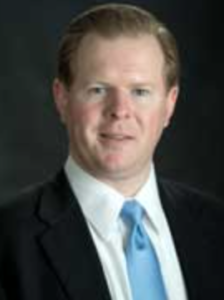The agency’s intense focus on market redesign and related issues comes in response to last February’s statewide energy crisis that left 4 million Texans without power.
________________________________________________
Reforming the Texas power market remains a top priority at the Texas Public Utility Commission, with debate continuing over possible new capacity mandates, over adjustments to an existing price-adder system and over the creation of new cost requirements for renewable energy generators.

The PUC is looking to make changes to improve reliability in response to last February’s winter storm.
The agency’s intense focus on these highly technical issues and others comes in response to last February’s statewide energy crisis that left 4 million Texans without power. The PUC has conducted multiple workshops and has called upon market participants to provide recommendations — all with the goal of getting new policies in place by the year’s end.
The commissioners, however, remain divided on key issues, and the path ahead remains unclear. Much of the debate so far has veered between two broad priorities: on the one hand, resolving operational issues that contributed to last February’s outages; on the other, overhauling the ERCOT power market to incentivize new investment. Many of the stakeholders weighing in during the proceedings have urged the commissioners to address operational issues first, and then move to broader market issues later on.
SETTING MILESTONES

PUC Commissioner Will McAdams
The PUC commissioners have created a market redesign roadmap with scheduled workshops and various other milestones. One of the first steps came October 20, when PUC Chair Peter Lake issued a detailed memo outlining his reform priorities. (You can read Chair Lake’s memo here.) PUC staff released a set of 16 stakeholder questions a few days later (which you can read them here) and then received 53 sets of responses to those questions. The commission also conducted work sessions on October 21 and November 4 and plans an additional work session for November 18. The commission plans to vote on a market redesign “final blueprint” on December 16.
KEY ISSUES
Several major issues remain in play, including discussions by the commissioners over whether to create new capacity obligations, over whether to assess new ancillary service charges on intermittent generators, and over potential changes to an offer price cap in the ERCOT market.
-

PUC Commissioner Jimmy Glotfelty
Chair Lake insists that the implementation of a “capacity” market in Texas is unacceptable, saying such a system would face opposition from the Texas Legislature. However, Chair Lake also has expressed support for creating capacity obligations for retail electric providers, municipally owned utilities and other “Load Serving Entities.” His three fellow commissioners have expressed skepticism or outright opposition to the LSE obligation proposal. You can read more about LSEs and Capacity Markets, here.
- Similarly, Chair Lake appears supportive of directly allocating the cost of a new sort of ancillary service called “Contingency Reserve Service,” or “ECRS,” to intermittent generation resources. Such generation resources typically include wind

PUC Commissioner Lori Cobos
and solar generators. Fellow commissioner Will McAdams appears to support him in that view, while Commissioner Jimmy Glotfelty has expressed strong opposition and Commissioner Lori Cobos said she wants more study. You can read more about Ancillary Services, here.
- The commissioners appear supportive of a proposal to lower the High Systemwide Offer Cap (or “HCAP”) from $9,000 per megawatt hour to $4,500. The HCAP is the highest price that electric generators can offer to sell their electricity into one of the principal wholesale power markets administered by ERCOT. Wholesale power prices remained stuck at $9,000 for a prolonged period during the winter storm, even though power more typically sells for less than $50 per mWh. The commissioners also appear generally supportive of coupling a change to the HCAP with an adjustment to a price-adder system known as the Operating Reserve Demand Curve, also known as the “ORDC”. You can read more about the HCAP and the ORDC here.
STAKEHOLDER COMMENTS
Market participants offered a wide range of recommendations relating to the HCAP, the ORDC, changes in ancillary services and other key issues. Market participants also have opined on the process generally.
Among the stakeholders to file comments with the PUC was the Steering Committee of Cities Served by Oncor, a coalition of cities active in regulatory matters at the agency. In its comments, the coalition noted that this year’s power outages resulted not from structural defects but from a failure to winterize power plants. As such, the coalition commended the PUC for taking steps to correct operational failures and applauded the agency for continuing to do so. However, the coalition also cautioned against some over-arching structural changes.

PUC Chair Peter Lake
The OCSC, for instance, expressed opposition to the LSE capacity obligation proposal, noting that, “it has not been demonstrated that ERCOT suffers from an imminent capacity sufficiency crisis, and it has not been established that capacity insufficiency caused the winter outage.” On the contrary, ERCOT has projected Texas to have healthy reserve margins for power in the coming year. The OCSC wrote that the creation of capacity requirements on LSEs potentially increases costs to consumers, but without addressing the underlying causes of the February outages.
Other interested parties — including various energy companies, ERCOT’s Independent Market Monitor, ERCOT itself and political groups — also submitted comments to the PUC. Although their responses varied widely, a review of the comments reveals a few common themes:
- Operational Issues: a common response is that the Commission should prioritize operational issues directly related to the winter outage and the possibility of future outages.
- Ancillary Services: parties recognize that ERCOT’s conservative approach to operations, under which it has raised the quantities of procured Ancillary Services, will remain a priority. The question remains exactly how to divvy up resources and loads among various Ancillary Services categories.
- ORDC Modifications: most parties recognize that modifications to the ORDC framework will be adopted, though many respondents are unclear as to the details.
- LSE Obligation: large generators favor LSE capacity obligations, but other stakeholders expressed much more reluctance to moving forward with such proposals. Other than generators, few market participants appear to favor the LSE obligation proposal.
You can read more about these proceeding in Project No. 52373, Review of Wholesale Electric Market Design, on the PUC website at this link.

